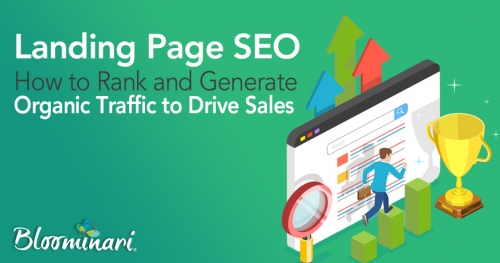It's simple, search engines are a source of targeted traffic. People are coming to your page because they've done a search related to the topic you’ve covered on your landing page.
Of course, it's easier to convert this type of traffic to sales. But the main issue is how to get this traffic to your website. In a moment, we'll be going through what you need to do to drive organic traffic to your landing page.
What’s Landing Page SEO?
Landing page SEO is the process of optimizing your landing page for relevant keywords to appeal to users’ search intent.
If your landing page is already live without the right optimization, this may be the right time to edit your content and other page elements to ensure it meets users’ search intents for relevant keywords.
Landing page SEO may be similar to your general website SEO. But there are some differences as your landing page is usually made for different purposes than your general web pages. It’s specifically designed to:
- Capture Leads
- Generate sales
- Channel visitors to another page (optional)
That said, here are the steps you need to take to get your landing page to rank higher for your target keywords:
1. Publish a Custom URL
While publishing your landing page, there are usually two options to publish it in terms of the URL. These are:
- Having the landing page URL as a subfolder of your domain.
- Having the landing page URL supplied by your landing page builder which is unrelated to your website.
It's vital that you have your landing page as a subfolder of your website. This is for one simple reason: to help your landing page take advantage of your domain authority.

If you've built your website and run it for years, then it already has the authority and ability to rank. Every page on your domain gets a benefit to their search rankings through this authority.
And your landing page should too. This will give your landing page a better ability to rank. Above all, make sure your custom URL is keyword-rich and helpful.
2. Optimize Your Page for Long-tail Keywords
Going for head keywords can be competitive. And no matter how well you optimize for some head keywords, you just can't rank on the first page. Why?
Because you're competing with authoritative websites. While optimizing your page for search engines, you need to be realistic.
Competing for head keywords with one or two words may waste your resources and show little results. Therefore, you should target long-tail keywords.
Long-tail keywords make up 70% of search traffic so it’s a big chunk.
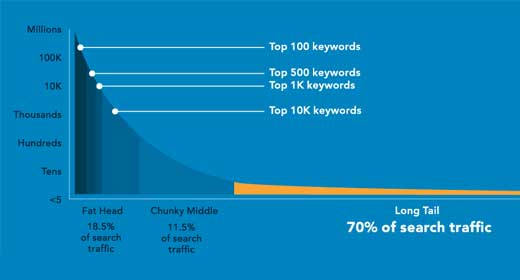
When you consider it, long-tail keywords will usually lead to lower organic traffic than head keywords. But long-tail keywords have a big advantage on head keywords: they're better at showing user intent.
For instance, “buy black winter shoes” shows more intent than “shoes.” With long-tail keywords, you have an opportunity to drive better conversions.
And added to that, while targeting a long-tail keyword, you can rank for several variations of the keywords. You can see significant leads and sales results just by optimizing your pages for long-tail keywords.
As an example, Amazon generates 57% of its book sales from long-tail searches.

3. Include Your Keywords on Your Metadata
Google and other search engines are smarter today. Which means, to a high degree, they usually understand what your page is about.
Despite this, you should point Google towards keywords you want to rank for. Add your target keywords to your metadata. What are the important parts of your page to add your keyword?
i). Title tag: This shows search engine what your page is about.
ii). Meta description: This is the part of your page that gives a brief description of your page. You should also have your keyword here. It usually appears in the search results.
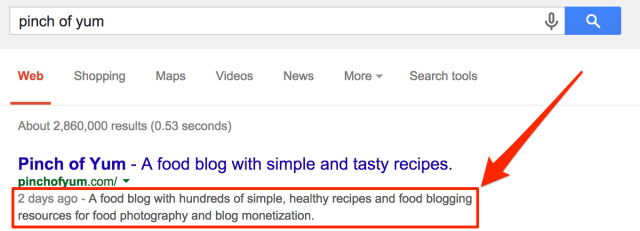
iii). Header tags: These helps to provide structure for your page. You should have a single H1 tag on your page -- usually the page title.
Then your subheadings can be in H2 or H3 tags. Make sure to add keywords to headings and subheadings where necessary. Avoid over-optimization, as that could get you into trouble.
4. Add or Create Long-form Copy for Your Landing Page
It's no new fact, pages with comprehensive and detailed content tend to rank higher on search engines than shorter ones. But if you've seen many landing pages, you'll notice that most of them are short.
While creating long-form copy for your landing page, you have to note that it doesn't always have to be as long as a traditional website page.
Your landing page should be long enough to provide all the details a visitor needs to convert. For instance, look at this landing page by Unbounce for a 7-day lead generation course:

When you scroll down the page, you'll see that they provide the course content and what participants will learn. This page may not contain 2,000 words similar to a blog post, but it provides more details than you'll find on many landing pages.
And that strategy worked for Unbounce. When you search for the keyword “landing page conversion course,” this landing page shows up at number #3.
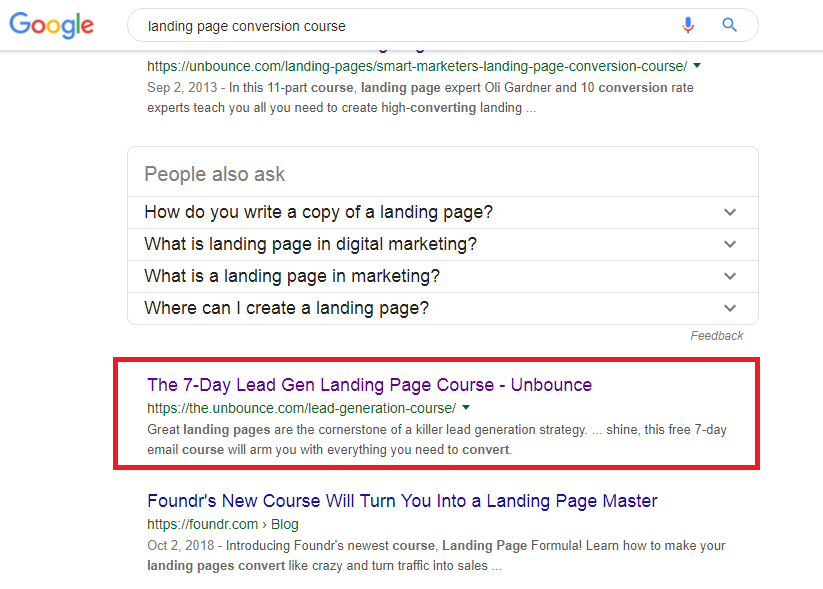
Note: If your landing page copy is too long, it may not offer a good user experience. But there’s good news. You can also use collapsible divs to help visitors navigate a long landing page.
5. Integrate Visuals and Video Into Your Copy
Traditionally, most landing pages have a few blocks of text and a call to action. But you can boost your page engagement metrics by adding other content formats to your page.
It's easier for people to consume visual content than written texts. Not only that, but they also remember it more. For instance, a study revealed that people will remember 65% of visual content 3 days after viewing it compared to 10% of the text.
And in some cases, a video or an image could help you explain your page purpose better than texts. In fact, there are landing pages today that have only videos to help convert their visitors.
When it comes to preference, 54% of consumers want to see more video content from brands.
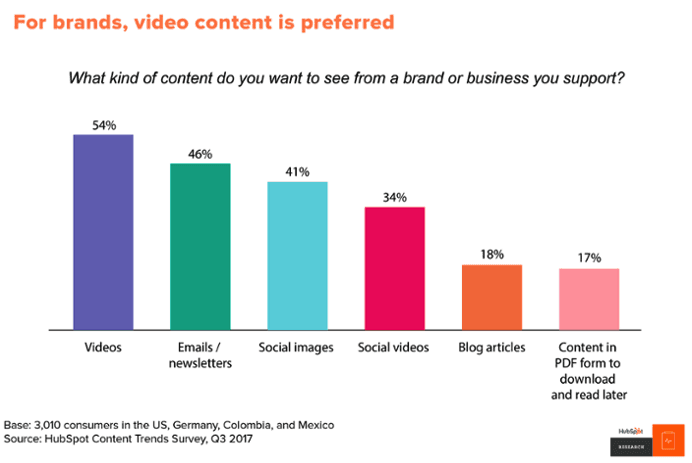
At first, you can add videos in the midst of your page text and see how your visitors convert. You can carry out A/B tests until you get your target results. Don't forget that Google RankBrain looks at users’ engagement on your web page to arrange results on the search results page.
When VidYard included a video in their “Coming Soon” page to capture leads for their launch, it led to a 100% increase in conversions. This means better engagement and can lead to a higher rank.
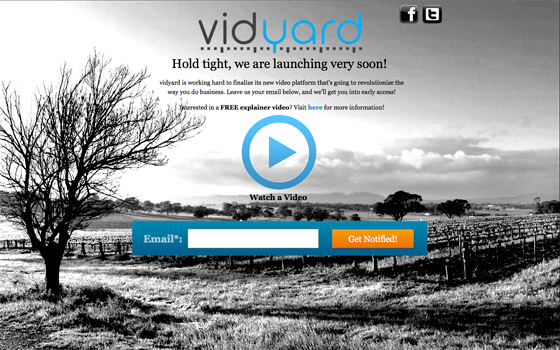
6. Secure Trusted and Relevant Links to Your Page
Backlinks are one of the most important ranking signals on the search engine results pages (SERPs). In fact, it’s the most important off-page ranking signal.
Because search engines use backlinks to understand how others see your page. When someone links to your page, they're voting for your page on that particular topic. Gaining more links to your page means other people see your page as valuable.
And this is why Google search analyst, Andrey Lipattsev, named backlinks as one of the 3 most important ranking signals.
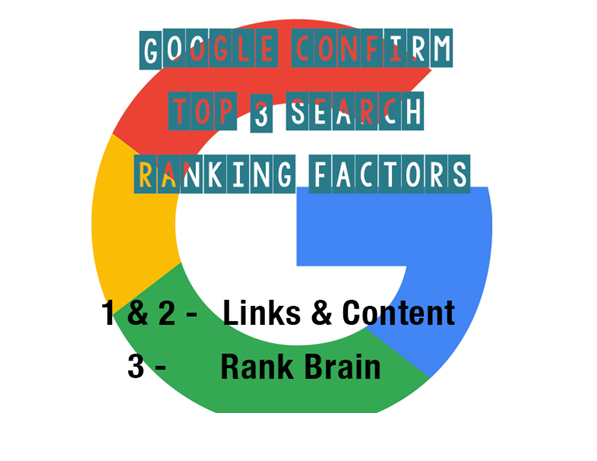
Now, the bad news is that it's even more difficult to gain backlinks to your landing page than a traditional content page. The good news is that it's possible.
In this case, you'll have to do more outreach as it's difficult to get editorial links. One of the things you can do is to find websites with pages relevant to your landing page.
You can then reach out to see if they can link to your page.
Another tip to remember is to link internally from your important website pages. For instance, if you have an authoritative post ranking high on search engines and related to your landing page, you should link to your landing page from this post. This will help pass more authority to your landing page.
7. Speed Up your Landing Page Loading Time
Speed is a search ranking signal as already stated by Google. Whether you're looking to rank on desktop or mobile.
This is because your potential website visitors hate slow web pages. In fact, a Google study found that the probability visitors would abandon your page would have risen by 32% if it loads for more than 3 seconds.
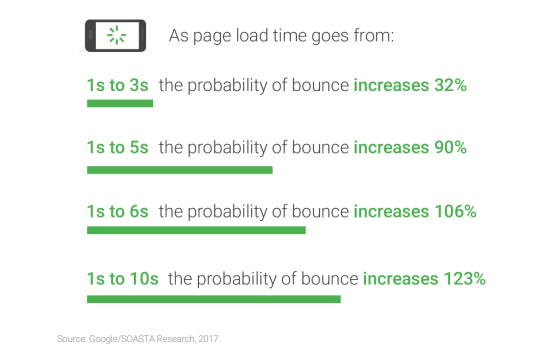
To know if your website loads up quickly, you can enter your website address into Google Pagespeed Insights, Google Mobile Speed Test, or Pingdom.
If you're using Pingdom, you'll have to select a server location which should be close to where your ideal visitors are. When you click on “Start Test,” you'll see details about your website like page size, load time, and so on.
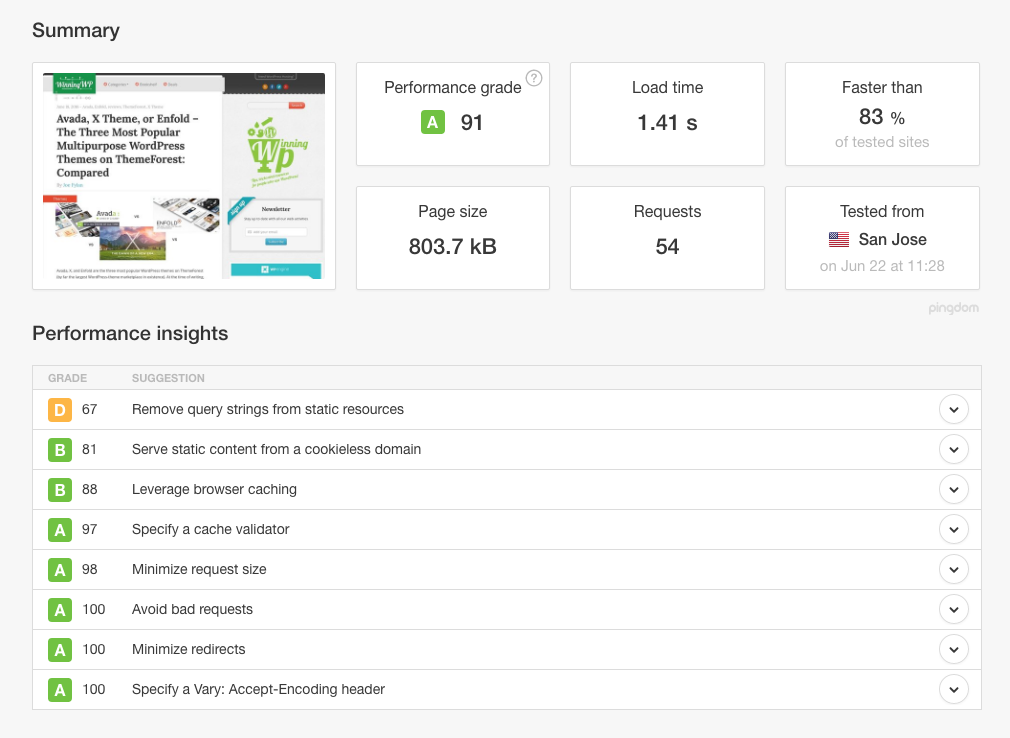
You'll also see more details on aspects of your website you can improve to increase your website speed.

Some important steps to help improve your landing page speed are:
- Use a good landing page builder.
- Use a fast website host.
- Minimize your page elements.
If you’re worried about your website load time (and you should because it can hinder your site from generating organic traffic and revenue), then you need to do something about it.
Better yet, let Bloominari, a San Diego Web Design Agency help you. Contact us today.
8. Get Social Signals for Your Page
The debate of whether social signals affect search rankings raged on for a while. And Google has stated that it doesn't use social signals as a ranking factor.
So why should you get social signals for your page? Because it helps you to get signals that matter for search engine rankings.
For instance, a post with a high number of social shares is usually a page that has high engagement.
Likewise, a page with a high number of social shares is a popular page and will likely attract more backlinks as a result of its popularity.
For instance, look at this study by Moz where there’s a correlation between length of the posts, social shares and the number of backlinks.

To encourage social shares of your landing page, you can add social share buttons to your thank you page after a visitor has dropped their information.
Conclusion
Getting targeted traffic to your landing page from search engines is a vital step to driving your sales up.
If you've been paying little attention to this source of traffic, then this is the time to change that.
Use the tips and strategies outlined in this post to boost organic traffic to your landing page and drive more sales.

